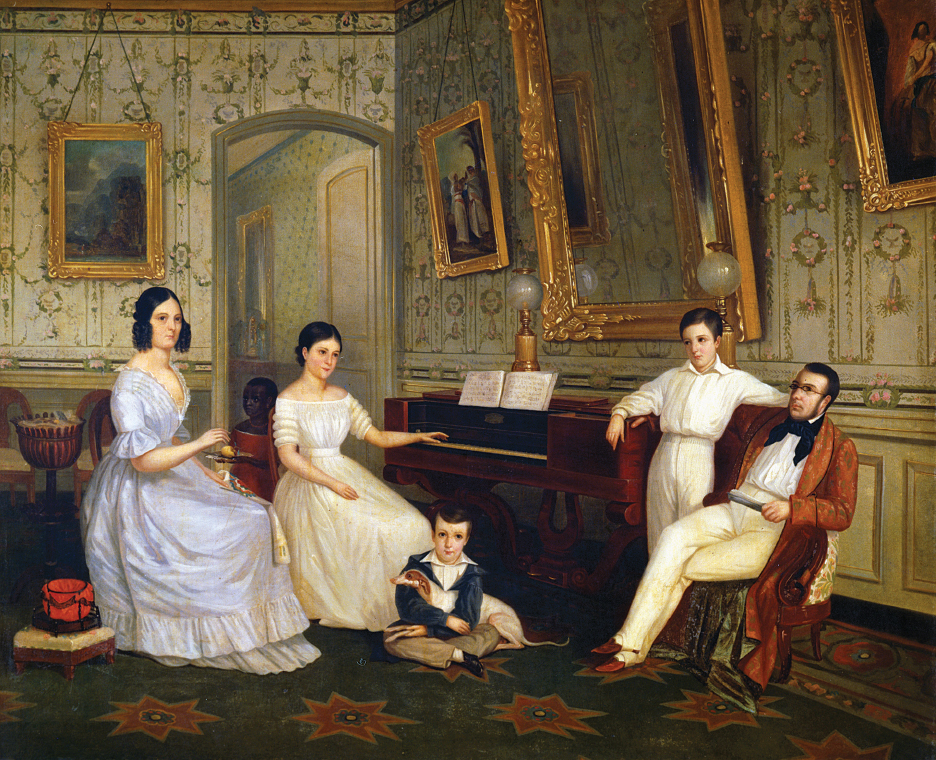America’s History: Printed Page 301
America: A Concise History: Printed Page 274
America’s History: Value Edition: Printed Page 265
The Business Elite
Before industrialization, white Americans thought of their society in terms of rank: “notable” families had higher status than those from the “lower orders.” Yet in rural areas, people of different ranks often shared a common culture. Gentlemen farmers talked easily with yeomen about crop yields, while their wives conversed about the art of quilting. In the South, humble tenants and aristocratic slave owners enjoyed the same amusements: gambling, cockfighting, and horse racing. Rich and poor attended the same Quaker meetinghouse or Presbyterian church. “Almost everyone eats, drinks, and dresses in the same way,” a European visitor to Hartford, Connecticut, reported in 1798, “and one can see the most obvious inequality only in the dwellings.”
The Industrial Revolution shattered this agrarian social order and fragmented society into distinct classes and cultures. The urban economy made a few city residents — the merchants, manufacturers, bankers, and landlords who made up the business elite — very rich. In 1800, the richest 10 percent of the nation’s families owned about 40 percent of the wealth; by 1860, they held nearly 70 percent. In New York, Chicago, Baltimore, and New Orleans, the superrich — the top 1 percent — owned more than 40 percent of the land, buildings, and other tangible property and an even higher share of intangible property, such as stocks and bonds.
Government tax policies facilitated the accumulation of wealth. There were no federal taxes on individual and corporate income. Rather, the U.S. Treasury raised most of its revenue from tariffs: regressive taxes on textiles and other imported goods purchased mostly by ordinary citizens. State and local governments also favored the wealthy. They taxed real estate (farms, city lots, and buildings) and tangible personal property (furniture, tools, and machinery), but almost never taxed stocks and bonds or the inheritances the rich passed on to their children.
As cities expanded in size and wealth, affluent families consciously set themselves apart. They dressed in well-tailored clothes, rode in fancy carriages, and bought expensively furnished houses tended by butlers, cooks, and other servants. The women no longer socialized with those of lesser wealth, and the men no longer labored side by side with their employees. Instead, they became managers and directors and relied on trusted subordinates to supervise hundreds of factory operatives. Increasingly, merchants, manufacturers, and bankers placed a premium on privacy and lived in separate neighborhoods, often in exclusive central areas or at the city’s edge. The geographic isolation of privileged families and the massive flow of immigrants into separate districts divided cities spatially along lines of class, race, and ethnicity.

TRACE CHANGE OVER TIME
Question
How and why did elite families change between 1800 and 1860?